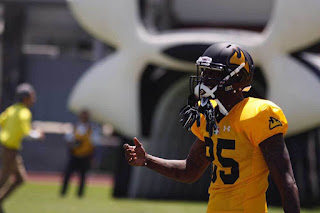Professional Bullies (Porros) in Public Colleges as Deterrrence for Football Fans in Mexico
This term "porros" (bullies) comes from the Spanish word Porra, witch means "cheer". And it comes from the first football games played in Mexico, back in 1936 (Sánchez:2004). Nowadays, they are pseudo students organized in groups in public universities and highschools. They are financed by local and federal authorities. The activities they perform are to intimidate, mainly, activist and student movilizations inside the campuses. The interesting thing about them is that they also intimidate, create fights, and riots at football games. Coincidence? I dont think so.
Football was, before the student uprising and massacre in Tlatelolco in October 2th 1968, the first sport in Mexico, shared by the baseball fans. What happened? Well, according to Robert Andrew Powell, from Bletcher Report, part of the student uprising in 1968 against the politcal repression and the corruption of the political regime started after a football game. A classic game: the National University Pumas against the White Donkeys of the Politecnic Institute.
Let's rememeber, by that time the Revolutionary Party was the only one in a simulated democratic system that lasted 70 years. After the massacre held in Tlatelolco, next to the ruins of a prehispanic city, football was disrupted and broken and it never recovered. They didn’t want the students to get together, so they tried to disrupt football, among other cultural and sport activities.
These rowdy “fans” were planted in the standiums to disrupt the games, to steal wallets and purses, to smash stuff and make the stadiums unattractive places to spend an afternoon (Andrew:2016). Alumnei, students and their families avoided stadiums. An example of this is that in the clasic football game, UNAM vs IPN, a fan was found dead after a riot in the tribunes. After that, the game was canceled and every year was threatened by the same kind of violence, and the authorities recomended to play it at closed doors. No fans. Porros won, again.
It seems incredible, maybe even laughable, that 1968 Mexican president Diaz Ordaz might have felt threatened by a sport. Is this a joke? Ask Mr Powell. So strong was his desire for order that, among all his efforts to crush the student uprising, he actively disrupted football. But it did not ended in President Ordaz administration, it continues nowadays.
In America, college football is a way that some of the students feels the union between them and the university. And there are good rivalries, some of them classic. But it is always full of alumni and their families, by students from all the years. It is full of rituals and symbols of unity with the college and the community. That way of thinking was present in old days on the Mexican college football. But after 1968 it never recovered. It is amazing to watch in movies or photos how crowded was the stadium, now it seems like a dream.
In conclussion, football has a lot of fans in Mexico, in many big cities, and its college league is the base of everything. But also, there are violent groups that obey to political actors that disrupt football in order to intimidate the social organization and look really hard to get rid of them.
Football was, before the student uprising and massacre in Tlatelolco in October 2th 1968, the first sport in Mexico, shared by the baseball fans. What happened? Well, according to Robert Andrew Powell, from Bletcher Report, part of the student uprising in 1968 against the politcal repression and the corruption of the political regime started after a football game. A classic game: the National University Pumas against the White Donkeys of the Politecnic Institute.
Let's rememeber, by that time the Revolutionary Party was the only one in a simulated democratic system that lasted 70 years. After the massacre held in Tlatelolco, next to the ruins of a prehispanic city, football was disrupted and broken and it never recovered. They didn’t want the students to get together, so they tried to disrupt football, among other cultural and sport activities.
These rowdy “fans” were planted in the standiums to disrupt the games, to steal wallets and purses, to smash stuff and make the stadiums unattractive places to spend an afternoon (Andrew:2016). Alumnei, students and their families avoided stadiums. An example of this is that in the clasic football game, UNAM vs IPN, a fan was found dead after a riot in the tribunes. After that, the game was canceled and every year was threatened by the same kind of violence, and the authorities recomended to play it at closed doors. No fans. Porros won, again.
It seems incredible, maybe even laughable, that 1968 Mexican president Diaz Ordaz might have felt threatened by a sport. Is this a joke? Ask Mr Powell. So strong was his desire for order that, among all his efforts to crush the student uprising, he actively disrupted football. But it did not ended in President Ordaz administration, it continues nowadays.
In America, college football is a way that some of the students feels the union between them and the university. And there are good rivalries, some of them classic. But it is always full of alumni and their families, by students from all the years. It is full of rituals and symbols of unity with the college and the community. That way of thinking was present in old days on the Mexican college football. But after 1968 it never recovered. It is amazing to watch in movies or photos how crowded was the stadium, now it seems like a dream.
In conclussion, football has a lot of fans in Mexico, in many big cities, and its college league is the base of everything. But also, there are violent groups that obey to political actors that disrupt football in order to intimidate the social organization and look really hard to get rid of them.


Comentarios
Publicar un comentario